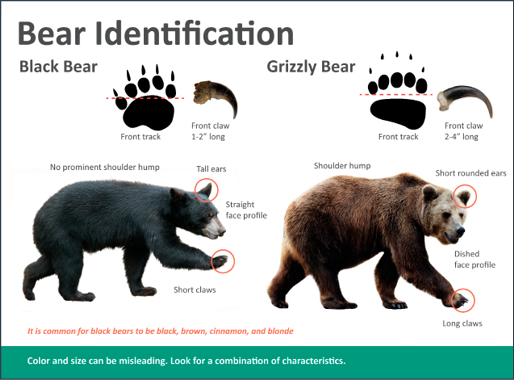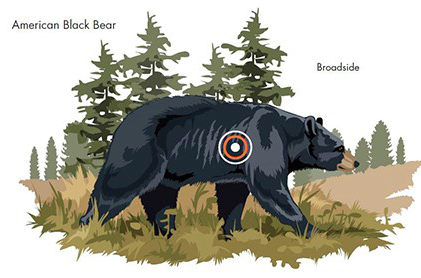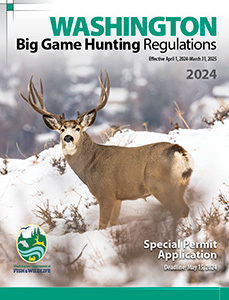Black Bear
Fall Black Bear General Season Dates:
August 1 - November 15
Area Restriction:
GMUs 157, 490, and 522 are closed to fall bear hunting.
A current special deer or elk permit is required to hunt bear in GMU 485.
License Required:
A valid big game hunting license, which includes black bear as a species option.
Second Black Bear License/Tag:
A second black bear transport tag/license must be purchased to take a second bear. Hunters may purchase a maximum of two black bear transport tag/licenses.
Bag Limit:
Two (2) black bear during the license year.
Hunting Method:
Hunters may use any legal weapon for hunting black bear. Bait or hounds are not allowed for bear hunting (RCW 77.15.245).

Bear Identification test:
Hunters that choose to hunt in GMUs located in grizzly bear recovery areas identified by the Department must successfully complete the annual WDFW online bear identification test, and must score 80% or higher and carry proof that they have passed the WDFW test or an equivalent test from another state. The GMUs that require a bear identification test are: 101, 105, 108, 111, 113, 117, 203, 204, 209, 215, 418, 426.
Identification of Grizzly and Black Bear
Grizzlies are protected under both federal and state law and may not be shot or killed. Be sure of identification if you are hunting black bear.
A mandatory bear identification test is required in some GMUs. See above for a list of GMUs. Bear Identification Program: wdfw.wa.gov/hunting/requirements/bear-identification-testing
Mandatory Submission of Bear Teeth Statewide
ALL successful bear hunters MUST submit the complete, unbroken root of the 1st premolar tooth from their harvest per WAC 220-415-090. Teeth should be sent using WDFW's pre-paid and self-addressed mortality envelope which can be obtained at any WDFW office or by calling (see Washington Department of Fish & Wildlife).
Successful hunters, please submit the required tooth from your harvest within 5 days of harvest , or by December 1, 2024.
WDFW uses teeth to get an accurate age of harvested bears. Hunters wanting to check the age of their harvested bear can visit the following website:
https://wdfw.wa.gov/hunting/requirements/harvest-reporting/tooth-lookup
Teeth are aged by an external laboratory and the turnaround time for age results can be up to 6 months after the close of the fall big game hunting season.

Hunters are urged to not shoot a female with cubs.
During the fall season, females may be accompanied by cubs (weighing 30-50 lbs). Cubs tend to lag behind when traveling, so please observe and be patient before shooting.
Where to Shoot a Bear
The placement of a hunter’s shot is critical in being able to harvest a bear and reduce the potential for wounding loss or injury. Due to a bear’s mass, the ideal shot placement is broadside with the shot being placed just behind the upper arm of the bear as the bear is taking a forward step.


